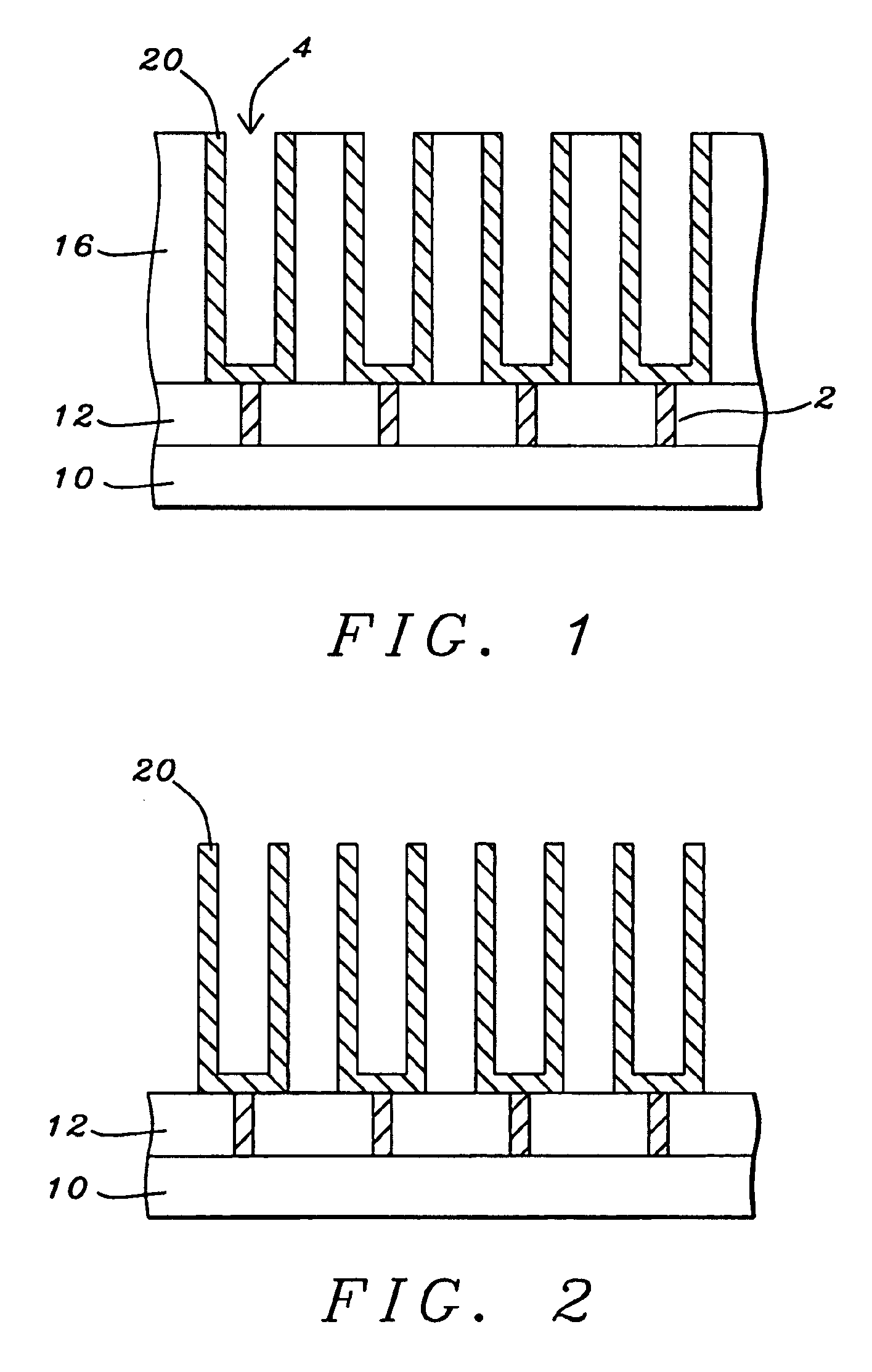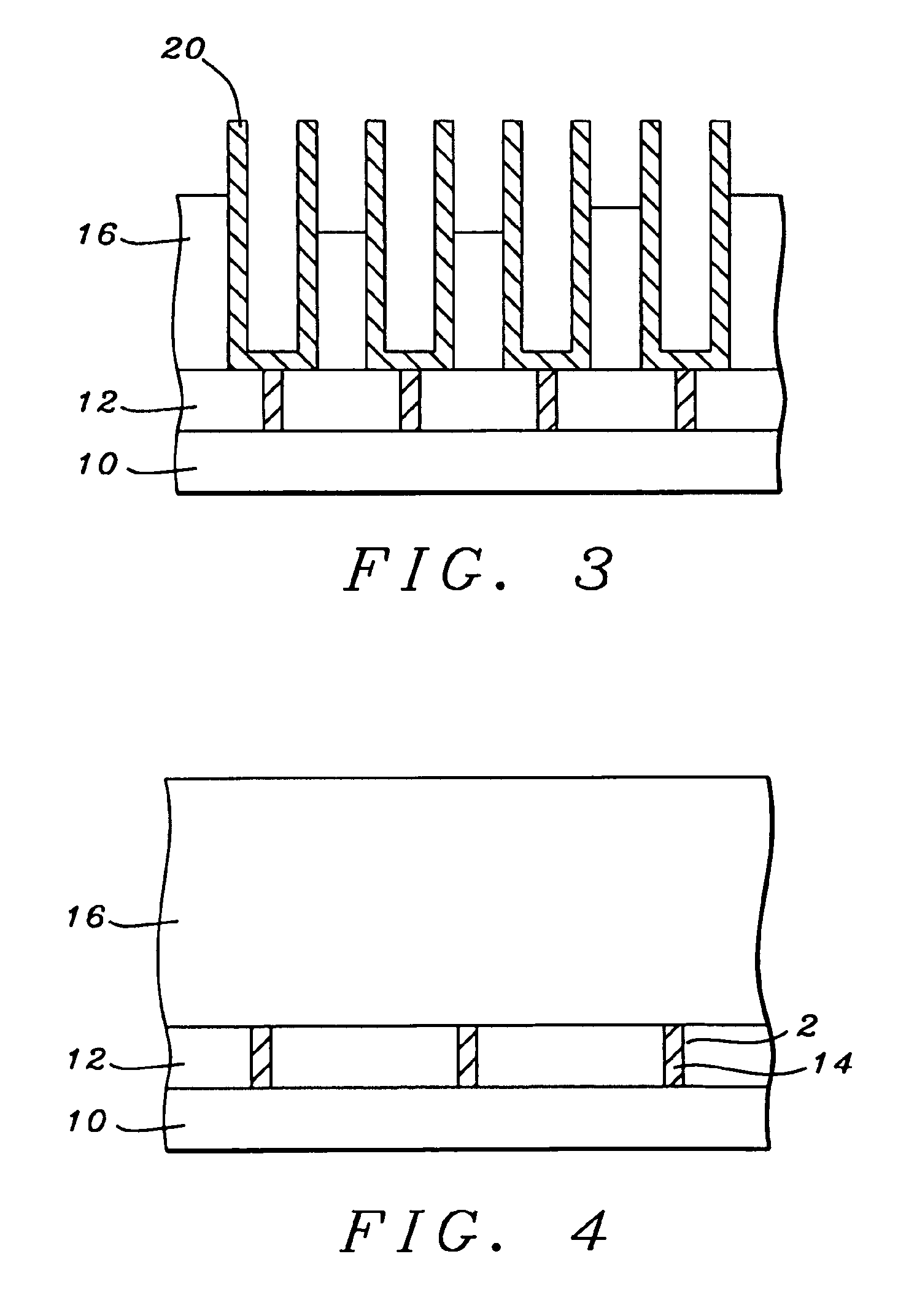Method of forming DRAM capacitors with protected outside crown surface for more robust structures
a technology of dram capacitors and crown capacitors, applied in the direction of capacitors, semiconductor devices, electrical equipment, etc., can solve the problems of reduced available area for making capacitors, damage during subsequent processing, and difficulty in forming these fragile freestanding capacitor bottom electrodes, so as to improve the strength and increase the capacitance. , the effect of reducing processing damag
- Summary
- Abstract
- Description
- Claims
- Application Information
AI Technical Summary
Benefits of technology
Problems solved by technology
Method used
Image
Examples
Embodiment Construction
ross-sectional view of the crown capacitor structure of FIG. 10C through the portion 11-11′ and depicting the exposed outer sidewalls of the bottom electrodes for increased capacitance.
[0027]FIG. 12 is a schematic cross-sectional view of the crown capacitor structure of FIG. 10C through the portion 12-12′ and depicting the insulating support joining four adjacent capacitors.
[0028]FIGS. 13 and 14 are schematic cross-sectional views showing the completed capacitors after forming the interelectrode dielectric layer and the top electrode plates.
DESCRIPTION OF THE PREFERRED EMBODIMENTS
[0029]The method for making an array of improved crown capacitors is now described in detail. The invention utilizes portions of an interlevel dielectric structure between capacitors to reduce subsequent processing damage while utilizing the remaining exposed outer surface (>50%) for increasing the capacitance. Although the drawings depict a method for making capacitor bottom electrode structures having ess...
PUM
 Login to View More
Login to View More Abstract
Description
Claims
Application Information
 Login to View More
Login to View More - R&D
- Intellectual Property
- Life Sciences
- Materials
- Tech Scout
- Unparalleled Data Quality
- Higher Quality Content
- 60% Fewer Hallucinations
Browse by: Latest US Patents, China's latest patents, Technical Efficacy Thesaurus, Application Domain, Technology Topic, Popular Technical Reports.
© 2025 PatSnap. All rights reserved.Legal|Privacy policy|Modern Slavery Act Transparency Statement|Sitemap|About US| Contact US: help@patsnap.com



